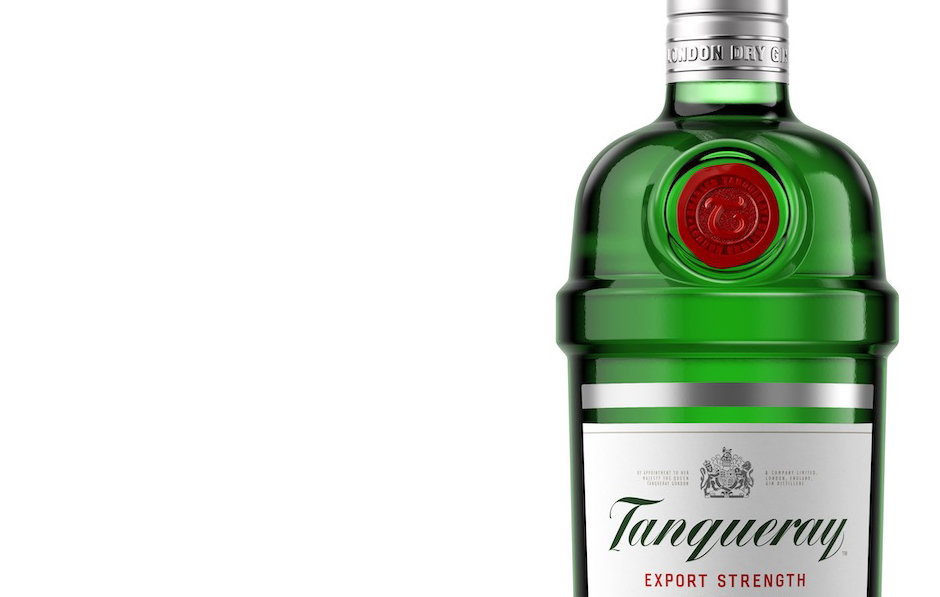King
gin
The green bottle is distinctive – and so is the spirit. Tanqueray London dry gin is one of the pioneers of the style and remains innovative to this day.


The number one choice of one in four bars when ordering gin for their patrons is Tanqueray. And that’s not a random factoid sucked out of the ether but a statistic from Drinks International, a respected industry publication, based on a survey of more than 100 of the world’s top bars.
With gin still top of the spirit pile by some margin, Tanqueray has held top spot for seven of the last nine years. It seems to be forever tussling with Gordon’s for popularity but Bombay Sapphire, Beefeater and Hendricks provide some serious competition too!
One of the jewels in the star-studded Diageo crown, Tanqueray is something of an anomaly in that its biggest market is the United States – and not the United Kingdom which is its country of origin. It’s a spirit with a long history – in eight years the brand will celebrate its 200th anniversary, a heritage few other gin brands can claim.
The story goes that the first distillation by Charles Tanqueray took place in 1830, just two years before the process or technique of continuous distillation was developed. According to a Diageo historian Joanne McKerchar, Tanqueray was born in 1810 to a long line of clergymen. His forebears had been priests for four generations but he wanted to buck the trend since he had an abiding interest in science. “Charles … decided he didn’t want to follow in their footsteps, so he took a risk and chose to forge his own path,” she wrote. He and his brother Edward learned how to become gin distillers by spending time at the Curries Distillery.

Charles Tanqueray insisted on just four ingredients for his London dry gin: juniper berries, coriander seeds, angelica root and liquorice.
The brothers spent years learning the process, but also experimenting with ingredients and McKerchar notes that Charles was meticulous in documenting everything he did. “They tried to learn all they could in those first years; we know this because we have Charles’s recipe books at the archives.” Small tweaks to the proportion of juniper berries were made, depending on where they were sourced from, for example, an indication of just how attuned to detail Tanqueray was.
In 1838 the brothers opened a store, Edward & Charles Tanqueray & Co. on Vine Street in London’s Bloomsbury. Historians such as McKerchar consider Tanqueray among the pioneers of the London dry gin style which is the most popular to this day. Until the development of continuous distillation in 1832, batch distillations were the order of the day – and it was difficult to maintain a consistency of flavour. It’s one of the reasons why Old Tom gins were made; the heavily sugared gin hid the somewhat nastier flavours of the less than ideal neutral grain spirit. Without the sweetness added, the gin was drier to the taste – hence London dry.
Although he developed something like 300 different recipes, Charles Tanqueray insisted on just four ingredients for his London dry gin: juniper berries, coriander seeds, angelica root and liquorice. To this day that’s the formula which remains in use.


That’s all well and good but Tanqueray needed to be a strong business in order to survive and thrive into its first and second century. Diageo’s archives note that Charles died in 1865 after retiring to Scotland. His son and heir, also named Charles was apprenticed as a grocer and opted to complete his training which took until 1867. One of Charles Senior’s brothers ran the distilling business until the young man took over and put his training as a retailer to good use.
“There were many gin distilleries in London and it was a very competitive industry,” McKerchar said. “So in order to survive, Charles Waugh (the son) masterminded the merger between Alexander Gordon & Co and Charles Tanqueray & Co in 1898 to form the largest gin house in the world.”
The merger led to Gordon’s becoming the local – UK – favourite and Tanqueray introduced to the United States which explains its popularity and market penetration there. Ironically Prohibition did Tanqueray’s fortunes the world of good because with so much “bathtub gin” around, a well-made London Dry was appreciated and demand for it was high.

Boosting sales, one martini at a time. The celebrity rat pack of Frank Sinatra, Sammy Davis Jr, Dean Martin and Peter Lawford were big fans of Tanqueray
One of the biggest boosts in popularity came in the form of celebrity endorsement before that was even acknowledged as a thing … The fabled Rat Pack of Frank Sinatra, Dean Martin, Sammy Davis Jr and Peter Lawford made Tanqueray martinis the cool thing to have. Apparently sales of Tanqueray doubled in 1964 without a single cent being spent on advertising or promotion!
With its distinctive green bottle being designed to be reminiscent of a cocktail shaker, the next innovation was a modern one. Tanqueray No. 10 was introduced in 2000, ahead of the gin revival. What sets it apart is that fresh citrus rather than dried fruit is used in its making, a first for gin. Fresh South African grapefruit, Mexican lime and lemons are joined by chamomile in the final distillation of No. 10.
And the name No. 10? It’s not from the number of botanicals – because there are only eight – but rather from the old still used for its production, the No. 10 still which is a small, 500-litre copper potstill.